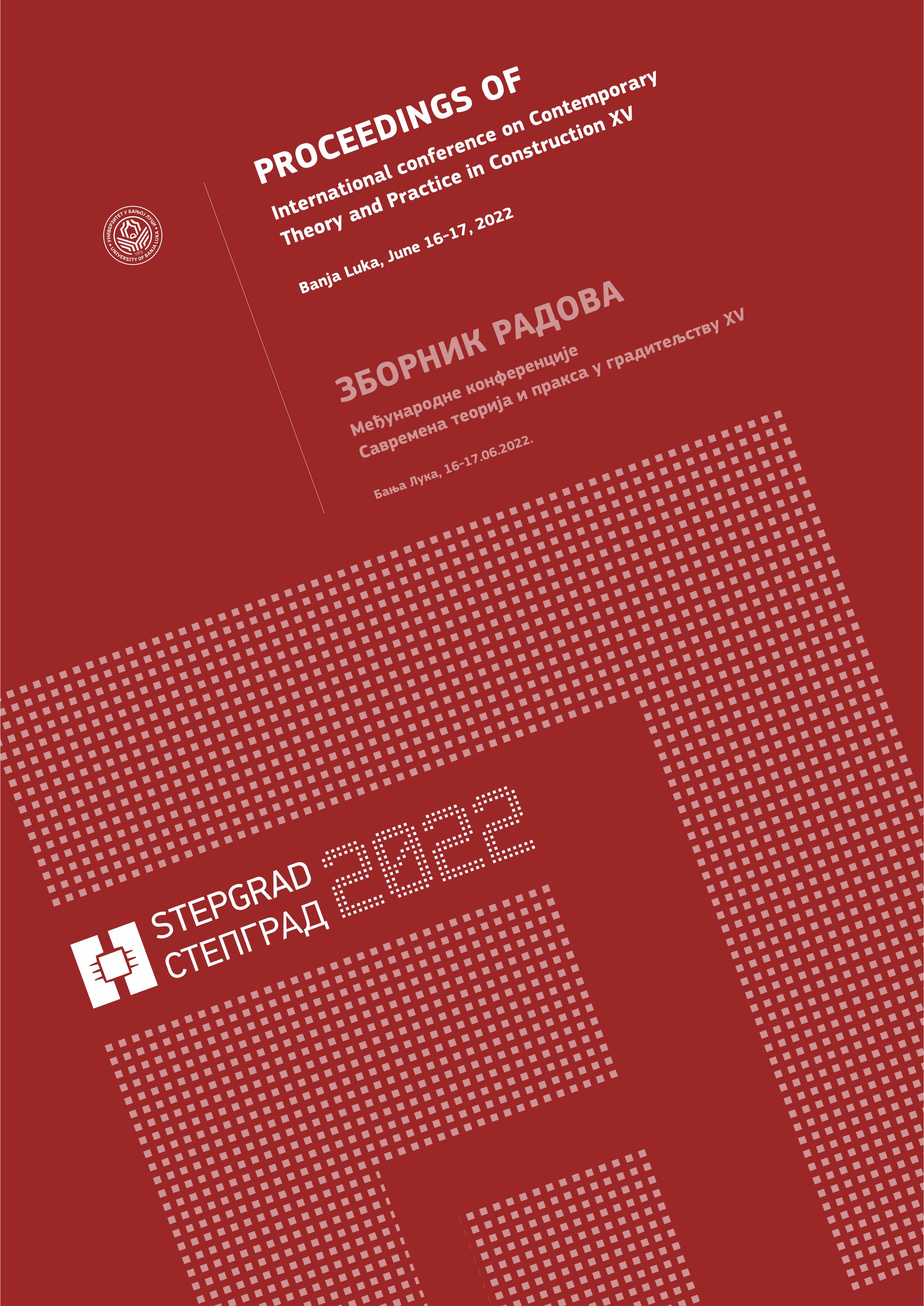ON THE SELECTION OF A SUITABLE CONCRETE
DOI:
https://doi.org/10.7251/STP2215001NAbstract
This paper aims to analyze the carbon footprint which the construction industry leaves on the global GHG emissions. It focuses on understanding the sources of the embodied carbon in each stage of the structure’s lifecycle. It also explores the ways of reducing the CO2 costs, focusing primarily on the RC structures. A comparative analysis of different types of cement as well as their corresponding carbon signature is performed and explored. Finally, the ecological benefits of the appropriate concrete and cement selection are presented though real-life examples.
References
Betonrechner Hintergrundbericht – Version 2.0, Fachstelle nachhaltiges Bauen, Fachstelle Ingenieurwesen, Zurich (CH), 2016
Cahier technique CVT 02 pour les constructions en béton de parement, 3eme édition, BETONSUISSE Marketing AG, entièrement révisée 2020
Cement and concrete as an engineering material: An historic appraisal and case study analysis, Gagg, Colin R., Engineering Failure Analysis, May 2014
Données des écobilans dans la construction 2009/1:2016, Office fédéral des constructions et de la llogistique Berne (CH), édition 2016
GHG emissions of all world countries - 2021 Report, Crippa, M., Guizzardi, D., Solazzo, E., Muntean, M., Schaaf, E., Monforti-Ferrario, F., Banja, M., Olivier, J.G.J., Grassi, G., Rossi, S., Vignati, E. ,EUR 30831 EN, Publications Office of the European Union, Luxembourg, 2021
Global status report for buildings and construction - Towards a zero-emissions, efficient and resilient buildings and construction sector, Global alliance for buildings and structures, IEA, UN environment program, 2019
How can we reduce the embodied carbon of structural concrete, Paul Astle, The institution of structural engineers, London (UK) February 2021
How to calculate embodied carbon, O.P. Gibbons and J.J. Orr, The institution of structural engineers, London (UK) August 2020
Le béton selon la norme SN EN 206: 2013 + A1: 2016, Holcim (Suisse) SA, édition main 2020
Le ciment selon la norme SN EN 197-1:2011 et le cahier technique SIA 2049:2014, Holcim (Suisse) SA, édition main 2020
LETI Climate Emergency Design Guide, How new buildings can meet UK climate change target, London energy transformation initiative (UK),2020 edition
Liste des produits et CGV Granulats + Bétons Centrales de Sierre, Sion, Martigny, avril 2020
Ökobilanz ausgewählter Betonsorten Schlussbericht – Version 4, Fachstelle nachhaltiges Bauen, Fachstelle Ingenieurwesen, Zurich (CH), 2016
On sustainable structural design, N. Kostic, Proceedings of the International fib Symposium on Conceptual Design of Structures Sept. 16-18, 2021, Attisholz, Switzerland
Proceedings of the International fib Symposium on the Conceptual Design of Structures held in Attisholz Areal, Switzerland, September 16-18, 2021
SIA 2030:2021 Construction, Béton avec granulats recyclés, SIA Zurich (CH), 2021

